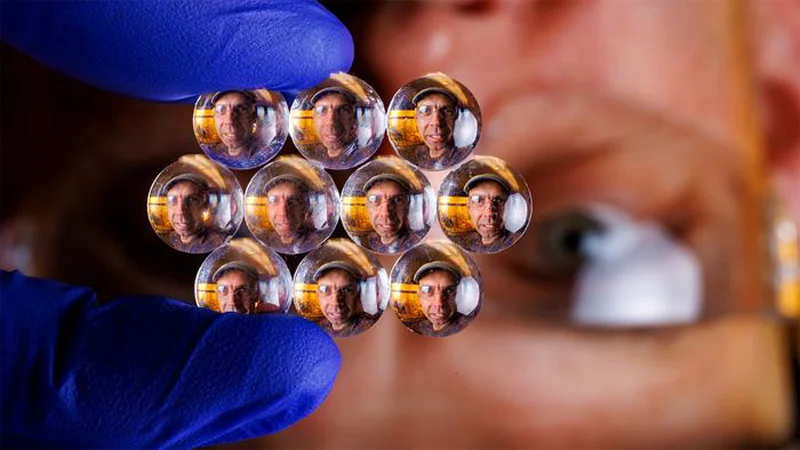Scientists create a canvas of varifocal soft microlenses
- October 25, 2023
- 0
A group of physicists and chemists have created a material with many unique properties. It is a type of hydrogel and silicone alloy that can be controlled and
A group of physicists and chemists have created a material with many unique properties. It is a type of hydrogel and silicone alloy that can be controlled and

A group of physicists and chemists have created a material with many unique properties. It is a type of hydrogel and silicone alloy that can be controlled and can rapidly change its size and physical properties. One application of the new material could be in machine vision, where arrays of soft lenses are simply focused down to embedding eyes on the surface of the robot’s skin.
The main problem in creating an adaptable material based on hydrogel and silicone was the rejection of one from the other. For a long time, developers could not find a way to tightly bond the hydrogel to the silicone base. Physicists had to seek help from chemists. An interdisciplinary team of scientists was able to choose a recipe for the correct mixing of components and polymerization conditions so that the polymer chains of the hydrogel become an extension of the polymer chains of silicone, to which more specific lithium compounds and subsequent ultraviolet treatment were applied. suitable.
On the basis of the new material, microlens arrays were created, similar to the faceted eyes of insects. The ability to change the properties of the lens material turned out to be suitable for the implementation of the focusing system. Interestingly, during the focusing process, the lenses practically did not change shape. The change in focal length occurred in the process of changing the density of the lenses, which changed the angle of refraction of light. It turned out to be quite simple to achieve a change in the density of the material of hydrogel lenses – for this it was heated to a temperature of about 80 °C with the help of liquid passing through the capillaries in the lenses.
As a result, scientists received adjustable-focus microlens arrays on a flexible substrate. Such arrays could cover the skin of soft robots to help them navigate space without a complex binocular vision system. Robots will not need to turn their heads. They will see 360° inside the skin. It would also be beneficial for vehicles with autopilot to perceive the road situation better.
But that’s not all. Such an adaptable material could be used in biology to grow many types of living tissue. Moreover, hydrogel base forms the basis of such studies today. As a result, it will be possible to create growth elements that will grow and change shape with the growth of their owners in the future. This could have many applications, many of which we haven’t even thought of yet. But inventors are confident it’s an exciting future.
Source: Port Altele
As an experienced journalist and author, Mary has been reporting on the latest news and trends for over 5 years. With a passion for uncovering the stories behind the headlines, Mary has earned a reputation as a trusted voice in the world of journalism. Her writing style is insightful, engaging and thought-provoking, as she takes a deep dive into the most pressing issues of our time.